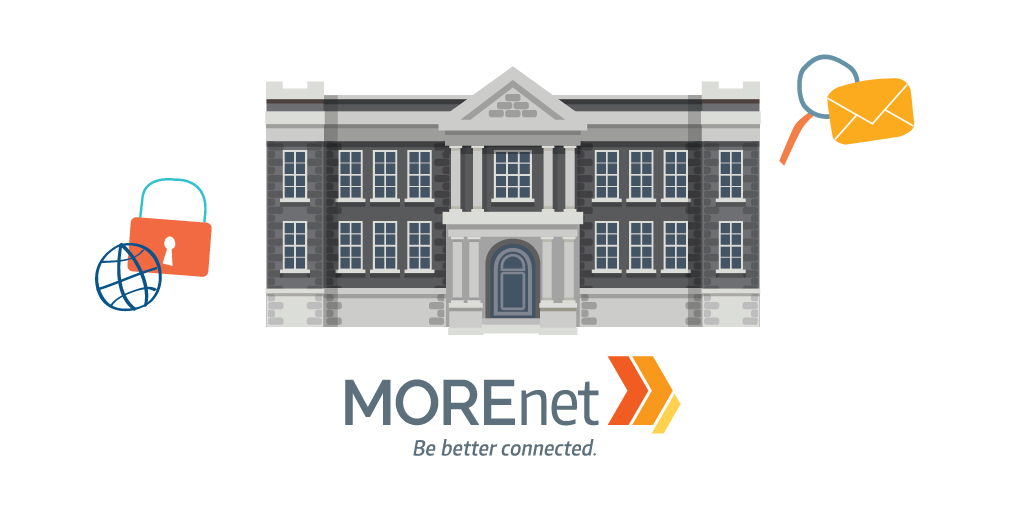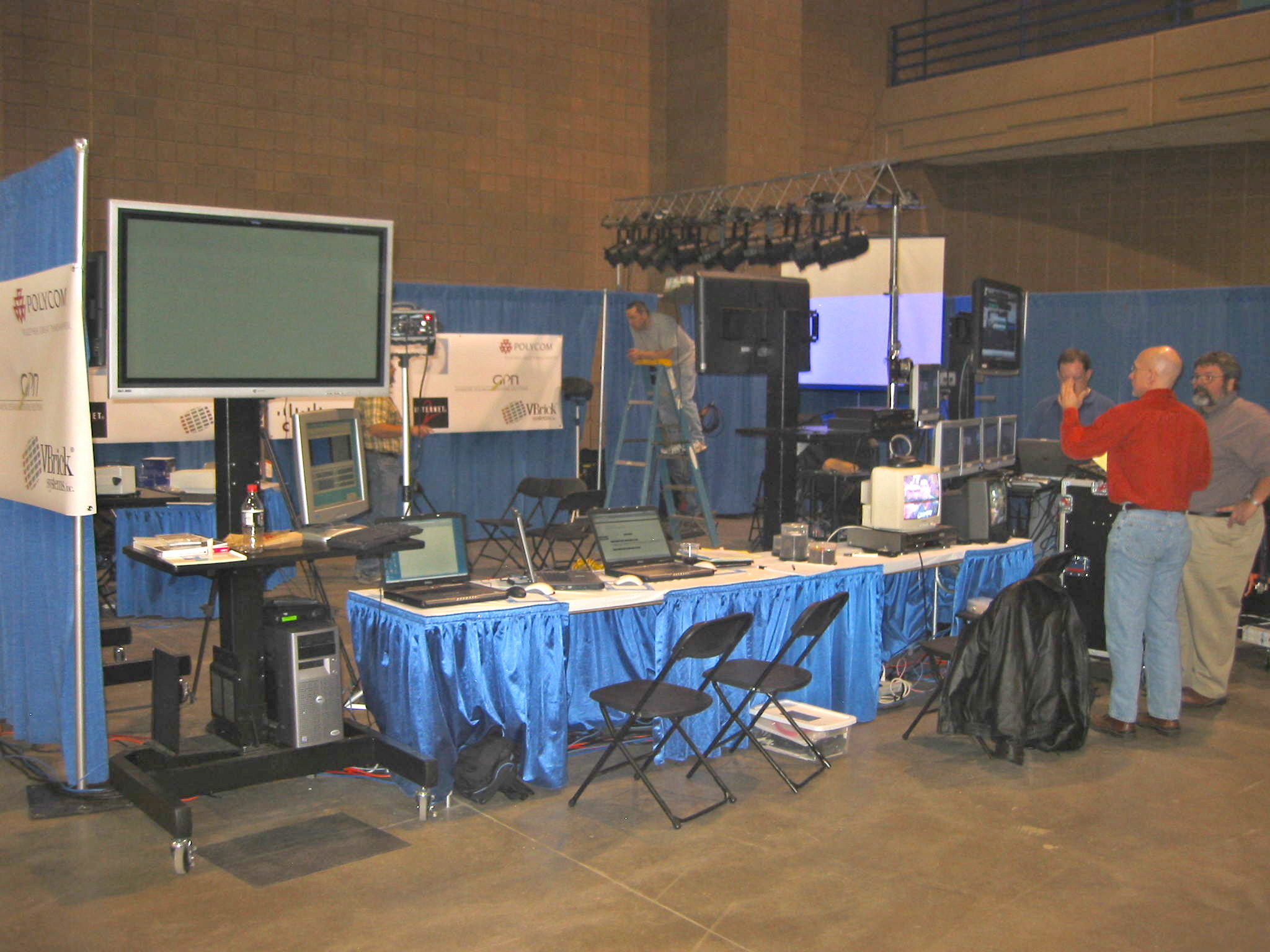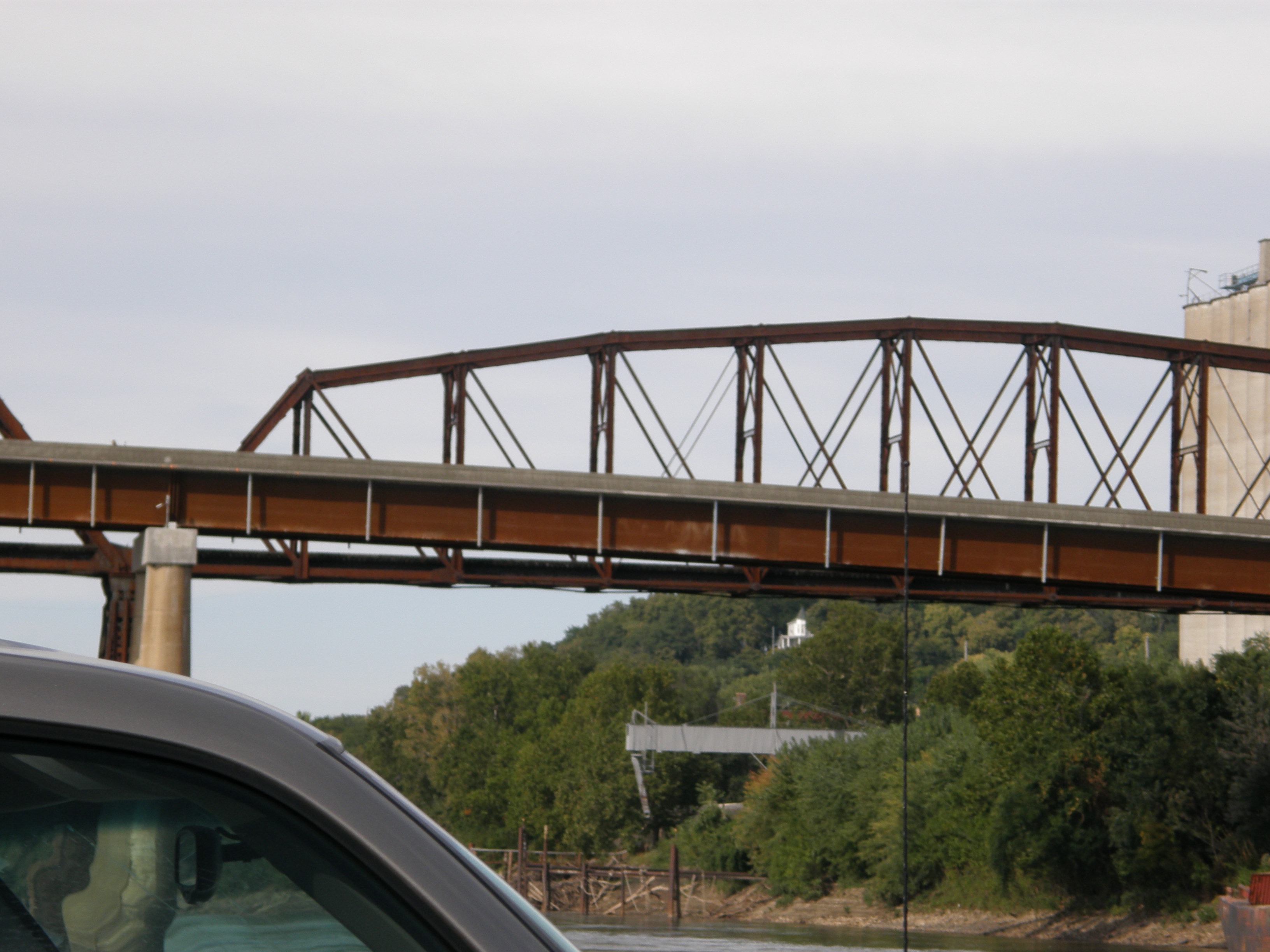
The early years of the videoconferencing group at MOREnet have been likened to mission control for a space flight. All the parts had to move in tandem to get this new technology up and running smoothly, and our video experts had to know every part. There were expected bumps along the way, and with each one, whether it be a switch or a firewall, you could hear our team troubleshooting and shouting over cubical walls to work out a solution. There was no one better to test a network than a video staffer. Our networking team said they knew if a video team member was heading to their desk then problem-solving was next on the agenda.
This journey all began in 1998, when Connie Coy joined Hank Niederhelm and Jim Lehman to form our first video team at MOREnet. Within the first year, they began helping four schools remote videoconference a Spanish class in the southern part of the state. By 2002, we were up to 150 videoconferences a week, and the demand for distance learning and telehealth continued to grow each year. At peak, our current video bridge supported nearly 23,000 videoconferences each year, with the majority being for-credit or dual-credit courses. Our centralized bridge enabled a tremendous partnership between our higher education members, providing instructors and content, and our K-12 members’ seeking courses for their students.

FIRST Robotics, Kansas City

Glasgow Bridge
Over the years, the popularity of distance learning also led to some exciting partnerships for MOREnet through our live streaming services. We streamed FIRST Robotics competitions in Kansas City, we set up cameras to live-stream the implosion and rebuilding of the historic Glasgow Bridge and we were able to stream a dinosaur dig in Montana with the educational company Roundtrips. We even had the privilege to live stream a real mission-control leader, NASA Flight Director Gene Kranz, using mobile wi-fi for the first time, during the 45th anniversary of the Apollo 11 flight at the St. Louis Science Center.
If you ask someone on the video team what their most memorable and rewarding job has been over the years, they will probably tell you it was when they went to assist Joplin after the devastating tornado that struck in May of 2011. We were asked to help set up streaming services in Missouri Southern State University’s Field House, which was housing 300 displaced people due to the tornado’s destruction. A one-day trip turned into a four-day effort when they were asked to stay and help set up streaming services for President Obama’s visit that was taking place a few days later.
As rewarding as some of these adventures have been and as much as videoconferencing has improved over the last 22 years, we don’t think any of us were quite prepared for how vital it would become in 2020 when the COVID-19 pandemic arrived.
We were fortunate to be ahead of the curve, having launched the latest in videoconferencing software, when we began offering discounted Zoom accounts to our members in 2016. We set up and trained our members on the latest in videoconferencing software over the next four years. Even so, in the first half of 2020, we had deployed nearly 23,000 Zoom Pro licenses to our members, and over the next six months, we would see our Zoom licensing to members double. By the end of 2020, we had deployed nearly 46,000 Zoom licenses for our members and trained 4,420 participants on using Zoom for 626 total hours.
In addition to providing Zoom licenses, we worked with multiple agencies to help our members navigate regulations such as FERPA and COPPA and to follow safety issues created by virtual learning. We developed an online tutorial walking our members through privacy settings and created online materials and training classes to help our members utilize Zoom safely, efficiently and creatively.
As we celebrate our 30-year anniversary, we reflect on the visionary plan videoconferencing was for MOREnet back in 1998, and how today there is hardly a household that hasn’t used the word Zoom or participated in a video chat over the last 12 months. We are grateful for the trust our members put in us to lead this effort and value the confirmation that the technology we are researching, developing and deploying is of vital importance to our members and the Missourians they serve.
Take a look at these other videos from over the years.
